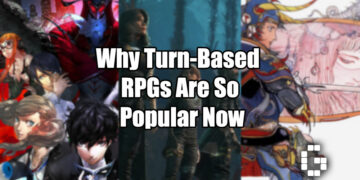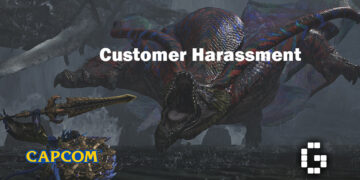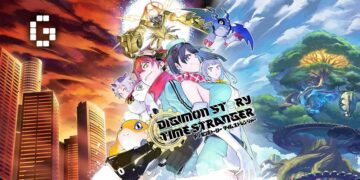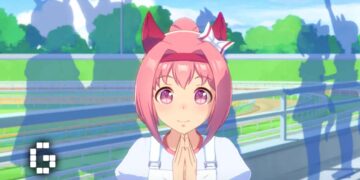Wo Long: Fallen Dynasty is the newest soulslike game from Team NINJA, the studio that brought us the Nioh series. With inspirations from Three Kingdoms and Sekiro: Shadows Die Twice, we travel back to the Han Dynasty in our review.
The Empire Long United Must Divide
Unlike Team NINJA’s Nioh series which is based on Japanese Mythologies, players set off on a new journey that explores the Three Kingdoms era mixed in with the Dark Fantasy genre. The story of Wo Long takes place in the Han Dynasty, China in 184 AD; now filled with conflicts and struggles to survive the rule of cruel demons.
Players will fill in the shoes of an ordinary soldier, who one day awakens to the hidden powers within him. The player now must now walk the path of a hero who is destined to free the land from demons and hunt down the mysterious mastermind behind this conflict.
 Our hero won’t be walking the path alone; we are joined by iconic historical figures such as Liu Bei, Cao Cao, and Zhang Fei to quell the forces of evil. These figures will also be accompanying you as companion characters which can be helpful during gameplay.
Our hero won’t be walking the path alone; we are joined by iconic historical figures such as Liu Bei, Cao Cao, and Zhang Fei to quell the forces of evil. These figures will also be accompanying you as companion characters which can be helpful during gameplay.
And with most soulslike games, we get to dabble with a fairly decent Character Creation where you can create your character in fine details. Which can be very helpful since Wo Long features a plethora of high-quality cutscenes where your character will be in the forefront; showing off modelling, animations, and facial expression in the finest degree. But it depends on whether you’d want to see your character’s face or cover it up throughout the game.

The Art of War
Combat, in any soulslike game, is by far the most important aspect. Whether it be simple or complex, players should expect challenging gameplay that will test their patience. In comparison to Nioh, Wo Long brushes up some aspects like the improved mobility where your character can nimbly move around during combat, and parkour across the map like a skilled martial artist.
Wo Long highlights on the Deflect and Spirit systems, which are your parry and posture respectively. In combat, your character is equipped with an arsenal of weapons; where you can carry two melee weapons, two ranged weapons, along several throwing projectiles such as knives and bombs as offensive tools to keep your distance. Additionally, each weapon you use has a special martial skill to deal high damage while penetrating enemy defenses where you can execute at any given time. Though, I find it to be most effective when used as a combo finisher.
 Players are also given access to four slots for Wizardry Spells which can be used either as offensive or supportive magic. Based on the Chinese Philosophy – Wuxing, which governs the relationship of the five elements being Wood, Earth, Fire, Water, and Metal. To oversimplify it, it’s essentially like a rock-paper-scissors system where each element has their strengths and weaknesses. Wood is stronger than Earth, Fire is stronger than Metal, so on and so forth. The spells from each element have their own uses in various situations, while some may not be so effective when used against bosses, so the game keeps you on your toes and encourages you to keep experimenting with new combinations.
Players are also given access to four slots for Wizardry Spells which can be used either as offensive or supportive magic. Based on the Chinese Philosophy – Wuxing, which governs the relationship of the five elements being Wood, Earth, Fire, Water, and Metal. To oversimplify it, it’s essentially like a rock-paper-scissors system where each element has their strengths and weaknesses. Wood is stronger than Earth, Fire is stronger than Metal, so on and so forth. The spells from each element have their own uses in various situations, while some may not be so effective when used against bosses, so the game keeps you on your toes and encourages you to keep experimenting with new combinations.
 Fans of the Nioh games will be thrilled to know that the Guardian Spirit mechanic returns in the form of Divine Beasts in Wo Long. Players can summon the help from the divine beasts once their Special Gauge is full. Each Divine Beast has powerful offensive and supportive abilities that increases your odds of winning. Throughout my time, I fancied myself the Qinglong Divine Beast because of its excellent supporting ability which replenishes the HP of both you and your allies in a circle. This essentially makes you invulnerable to fatal attacks and is a crucial skill to secure victory, especially during the last phase for boss fights, which tends to be the most intense.
Fans of the Nioh games will be thrilled to know that the Guardian Spirit mechanic returns in the form of Divine Beasts in Wo Long. Players can summon the help from the divine beasts once their Special Gauge is full. Each Divine Beast has powerful offensive and supportive abilities that increases your odds of winning. Throughout my time, I fancied myself the Qinglong Divine Beast because of its excellent supporting ability which replenishes the HP of both you and your allies in a circle. This essentially makes you invulnerable to fatal attacks and is a crucial skill to secure victory, especially during the last phase for boss fights, which tends to be the most intense.
 Setting aside the Wizardry spells and Divine Beasts, the most satisfying mechanic during combat is the parry system. While it played a vital role in Nioh, I had trouble adjusting myself with its timing. Whilst with Wo Long, it manages to give the right amount of pause to execute your parry in a way where you can read and react to your enemy’s movements without feeling awkward.
Setting aside the Wizardry spells and Divine Beasts, the most satisfying mechanic during combat is the parry system. While it played a vital role in Nioh, I had trouble adjusting myself with its timing. Whilst with Wo Long, it manages to give the right amount of pause to execute your parry in a way where you can read and react to your enemy’s movements without feeling awkward.
Each and every parry that you execute can be followed up with a counterattack, but when fighting a boss, they’ll usually launch a flurry of attacks which must also be met with consecutive perfect parries. However, for those who are still getting used to the parry, you can opt for the Block button. But I personally don’t recommend it, not only do enemies come equipped with special attacks that can’t be resisted, you’ll lose Spirit drastically which can be detrimental when fighting bosses.
 Learning how and when to parry will be your bread and butter because you can parry off a variety of attacks including spells. And for each time you parry, your character will also move closer to the enemy which is extremely useful to close the gap.
Learning how and when to parry will be your bread and butter because you can parry off a variety of attacks including spells. And for each time you parry, your character will also move closer to the enemy which is extremely useful to close the gap.
When your Spirit bar is filled up more than your enemies, you can perform a Critical Blow, which is similar to the Deathblow finisher in Sekiro. It’s also worth noting to always keep your equipment load to a minimum, as you won’t be able to perform parries since it’ll turn into a regular dodge maneuver. It did take me a while to notice it though, because for the longest time, it felt like my character couldn’t parry attacks at all even with the right timing.

The World Under Heaven
The level scheme with Wo Long is very similar with the Nioh Series, where it’s still made separately as if going through a mission, which often makes exploration feel limited. In terms of level design, there isn’t much places that stand out, aside from the Hidden Village area which is stunning. However, I quite welcome this separate level structure, because it makes the scope of exploration more focused and minimises backtracking. It’s a shame that the world design isn’t as interesting as it could be, despite its premise being a Dark Fantasy version of the Three Kingdoms era.
 The games presents you with so much loot that your inventory would tend to cluttered. Although on the other hand, you’re given decent incentive to get new equipment without having to buy or upgrade through the blacksmith, couple with the plethora of items that can be sold.
The games presents you with so much loot that your inventory would tend to cluttered. Although on the other hand, you’re given decent incentive to get new equipment without having to buy or upgrade through the blacksmith, couple with the plethora of items that can be sold.
Another part that reminded me a lot of Nioh was the many graveyards of other players scattered throughout the levels, where you can face the main target who defeated them. These enemies usually have higher Morale, which is another major system of the game that determines how strong each enemy you face.
When your character has higher Morale, it makes battles become easier. Morale is sensitive and you’ll lose some of it every time you’re defeated by an enemy. However, if you defeat enemies that have high Morale, the rewards you get outweigh the risk. The game also offers other options to boost your morale such as consuming Elixir or interacting with Marking Flags scattered across several points.
The Crouching Dragon
Wo Long: Fallen Dynasty offers a variety of interesting character customisation and can be accessed through the Battle Flag main menu, which acts as the game’s bonfire. First comes the Level Up menu, which also follows the Wuxing philosophy. Depending on prioritised element, your character will have stats that match its main description such as how the Wood Virtue focuses on HP, Fire Virtue focusing Attack, etc. At its core, this is still relatively similar to the Level Up system in similar soulslike games, but I personally think Wo Long categorises it in a more unique and understandable way.
 From the Battle Flag, you’ll be able to access the complete skill tree for the spell system which is categorised for each element. It turns out that this system is linked with the level of each element that you increase from your character’s Level Up. Even though you can gain access to more powerful skills, there are certain level requirements that must be met first. Once you’ve got the skills you want, you’re able to organise the set in four special slots where the game also gives you the option to save the combinations via the Battle Set option so you don’t need to go through the hassle of changing skills manually again.
From the Battle Flag, you’ll be able to access the complete skill tree for the spell system which is categorised for each element. It turns out that this system is linked with the level of each element that you increase from your character’s Level Up. Even though you can gain access to more powerful skills, there are certain level requirements that must be met first. Once you’ve got the skills you want, you’re able to organise the set in four special slots where the game also gives you the option to save the combinations via the Battle Set option so you don’t need to go through the hassle of changing skills manually again.
 You’re also able to choose which Warrior to join your story with, and you can even bring in more than one with you if you’re having difficulties navigating an area or facing a tough boss. But for those who want an extra challenge, the game has provided the option to eliminate teammates by using the Willow Branch. However, this item is hidden in your inventory and I’m certain that many players won’t notice it right away.
You’re also able to choose which Warrior to join your story with, and you can even bring in more than one with you if you’re having difficulties navigating an area or facing a tough boss. But for those who want an extra challenge, the game has provided the option to eliminate teammates by using the Willow Branch. However, this item is hidden in your inventory and I’m certain that many players won’t notice it right away.
Verdict
 All in all, I’m very satisfied with Wo Long: Fallen Dynasty as it provides overall superb quality on many fronts. Challenging combat with a more responsive parry system, a variety of weaponry and magic options with a unique five-element concept, fluid character mobility that makes exploration and combat more exciting, along with amazing production value. All of which contributes to possibly the best soulslike game from Team NINJA so far.
All in all, I’m very satisfied with Wo Long: Fallen Dynasty as it provides overall superb quality on many fronts. Challenging combat with a more responsive parry system, a variety of weaponry and magic options with a unique five-element concept, fluid character mobility that makes exploration and combat more exciting, along with amazing production value. All of which contributes to possibly the best soulslike game from Team NINJA so far.
The game is not without its flaws of course, as the game has a variety of crucial information that wasn’t explained in the main tutorial. For example, equipment load affects parry maneuvers and how to remove companions from the party using special items. Players would be forced to go through a fairly troublesome process until they can realise it themselves.
In addition, the game still has a bland and uninteresting world design despite its premise, which also affects the separate level structure in the Nioh series which is still less fun to explore.
| Pros | Cons |
| Cooler combat with responsive parry system | Bland world design to level structure during exploration |
| Maximum mobility for acrobatic action during exploration and parkour | UI that still a bit messy |
| Implementation of Wuxing's five-element concept that ends up being very unique | Some important tutorials being hidden |
| More impressive production value |
 Wo Long: Fallen Dynasty was played on PlayStation 5
Wo Long: Fallen Dynasty was played on PlayStation 5
For more Wo Long content, you can check out our preview of the game here, and our interviews with Wo Long Producers here and Team NINJA producers here.




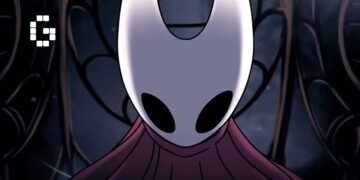






![[EXCLUSIVE] inZOI Studio CEO Hyungjun Kim Talks AI Innovation and Community-Driven Design at gamescom 2025](https://cdn.gamerbraves.com/2025/08/inZOI-gamescom-2025_Interview_FI-360x180.jpg)
![[EXCLUSIVE] PUBG: BLINDSPOT Project Director Shares Insights on Creating a New Type of Tactical Shooter](https://cdn.gamerbraves.com/2025/08/PUBG-BLINDSPOT_Interview_FI-360x180.jpg)
![[EXCLUSIVE] Resident Evil Survival Unit Executive Producer Shinji Hashimoto Opens Up About Resident Evil’s Mobile Evolution](https://cdn.gamerbraves.com/2025/08/Resident-Evil-Survival-Unit_Interview_FI-360x180.jpg)


![[BIC2025] Exclusive Interview with Tripearl Games CEO on Adapting The Player Who Can’t Level Up for Gaming](https://cdn.gamerbraves.com/2025/08/BIC-2025-Player-Who-Cant-Level-Up_Interview_FI-360x180.jpg)


![[EXCLUSIVE] Honor of Kings Goes Global: Interview with James Yang on International Esports Expansion](https://cdn.gamerbraves.com/2025/08/James-Yang-Exclusive_Interview_FI-360x180.jpg)



![[GIVEAWAY] SHINOBI: Art of Vengeance Delivers the Deep Combat Modern Action Gamers Want](https://cdn.gamerbraves.com/2025/08/Shinobi_Feature_FI-350x250.jpg)

